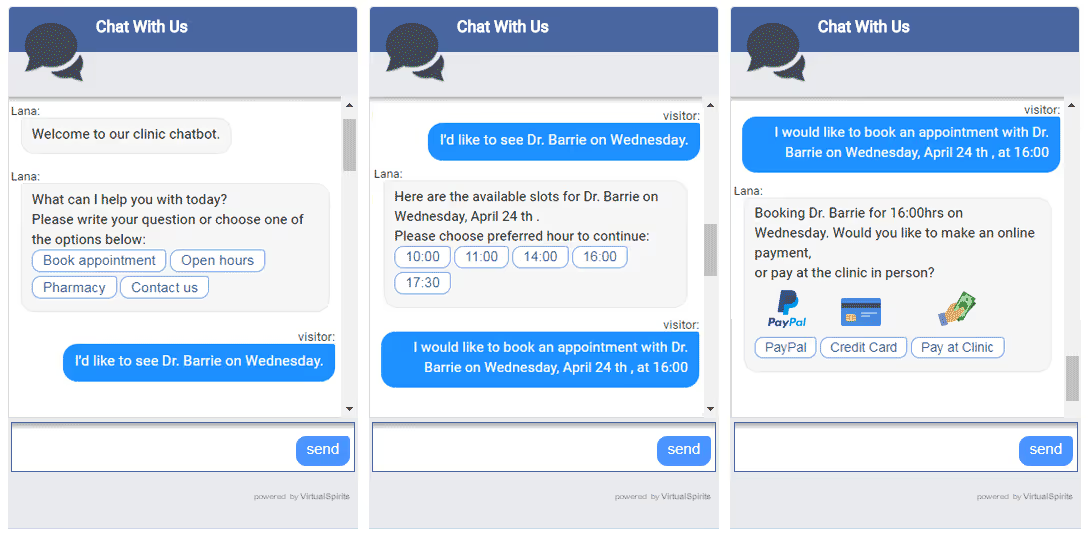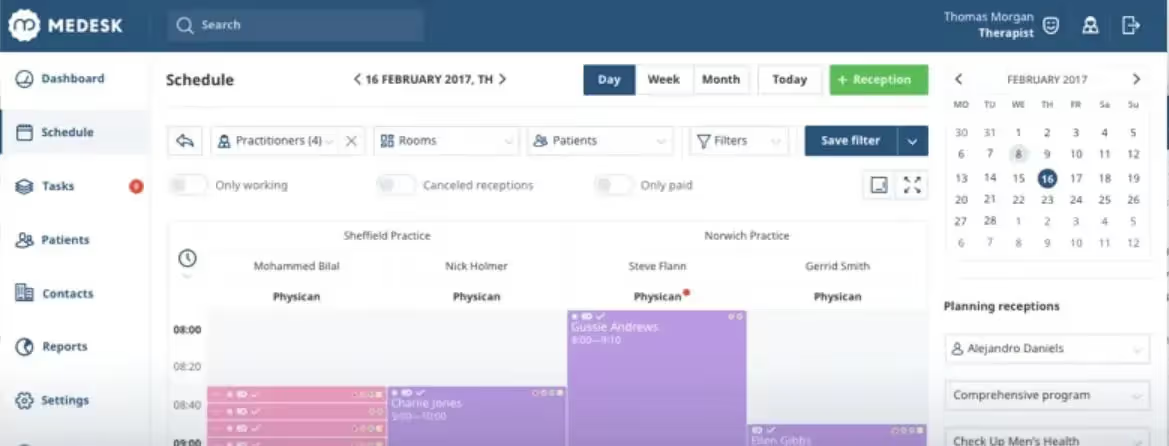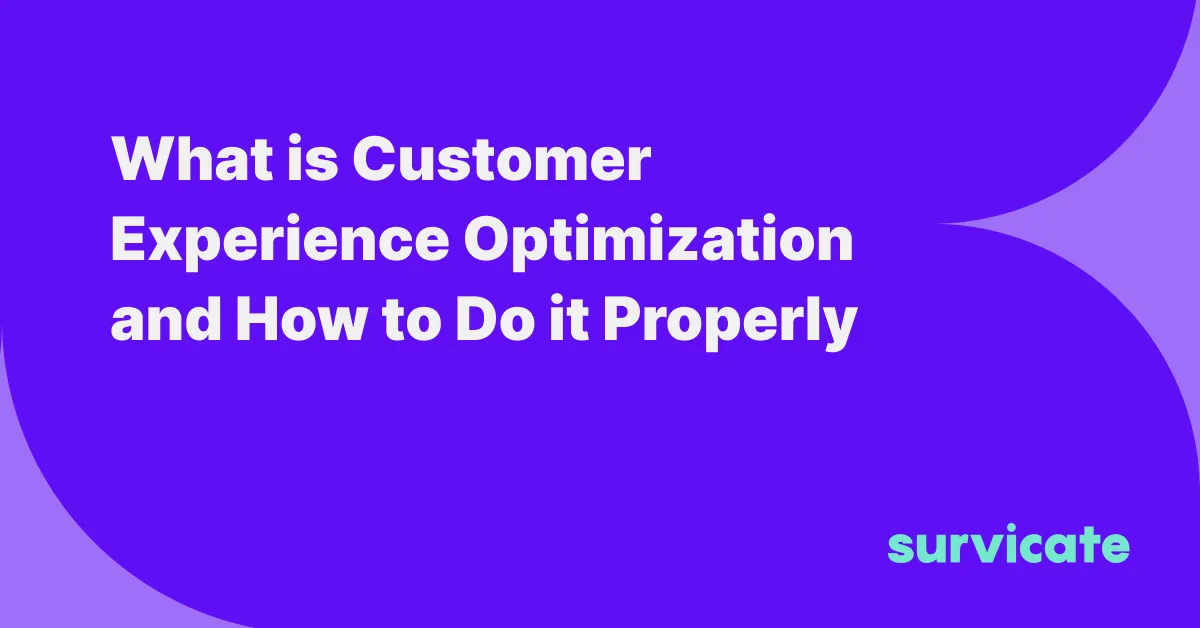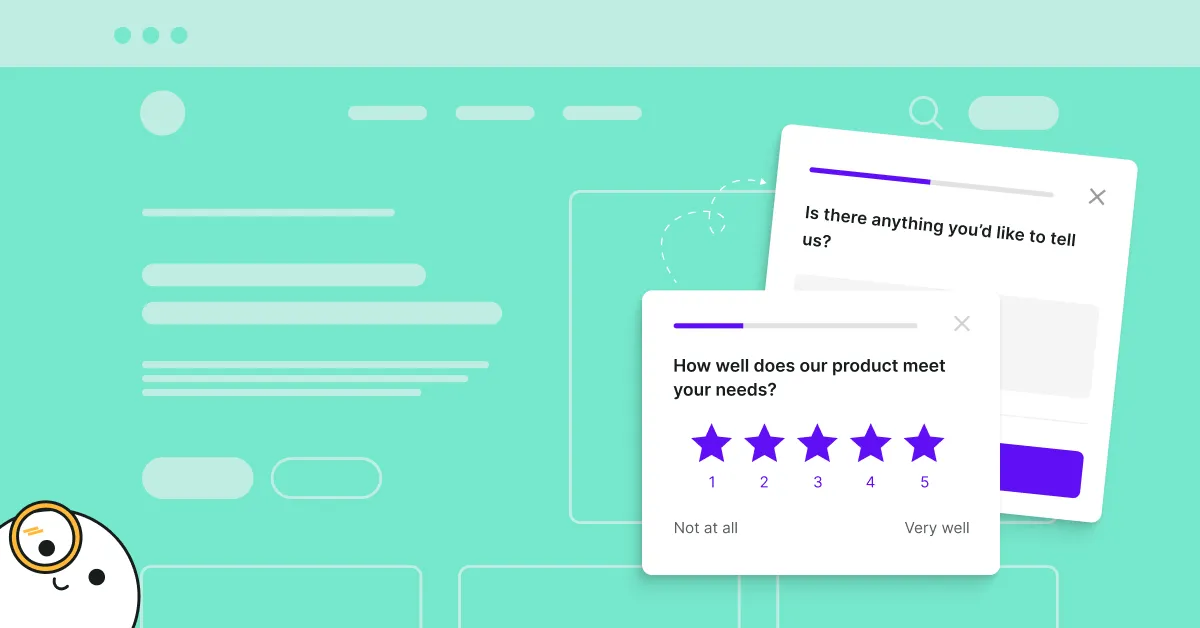When we think about the expression “customers”, we usually think of someone who buys a product or service.
However, the major shifts in the healthcare system in recent years mean that the expectations are higher than ever before and patients demand the quality of service that they get from B2C and B2B companies every day.
But how do you go about improving customer experience in an area that is still getting it feet wet in digital and customer experience transformation? There are actually plenty of ways and the major events that took place over the past few years have made a massive impact on healthcare.
Today, we’ll show you some strategies to make your patients feel exceptional before, during and after their visits and consultations, all while providing an amazing healthcare customer experience.
So, why does top notch customer experience in healthcare matter? Let’s find out.

The 2020 shift in customer experience in healthcare
Saying that the coronavirus pandemic changed the world is a major understatement. In the case of healthcare, it spun it by 180 degrees as medical workers and all types of healthcare providers and healthcare organizations were in the focus of the rapidly changing situation.
The one thing that changed drastically is that maintaining contact became nearly impossible so patients and healthcare professionals had to find alternative methods to interact. Telemedicine was not a new thing by any means but its skyrocketed thanks to the pandemic. Healthcare customer experiences declined and a new change had to be made.
The emerging use of tech in CX for healthcare
As it became increasingly difficult to see doctors in person, that meant that other forms of communication took over. Here are some specific numbers:
- SMS and MMS interactions increased 3x in one year
- Online messages and chat increased by 150% in use
- The number of calls and emails to healthcare providers doubled
All of this means that the rising challenge for healthcare is meeting customers’ expectations in terms of the healthcare customer experience on the platforms that they prefer. In other words, the recent events added fuel to the fire of the digitization process in healthcare businesses.
But how you can embrace that change and revolutionize your customer experience in healthcare? What can be done to provide bespoke CX?
How to improve customer experience in healthcare - easy tips for getting started
You can make the biggest impact and achieve a positive customer experience by focusing on one thing - your customers’ online interactions with your institution as a healthcare provider.
1. Embrace digital interactions
With the pandemic (mostly) gone, your customers can now hopefully swing by the office just as they could before. However, you can also expect that they’ll want to contact you through other means for live web consulting services, even in combination with office visits.
The great news is, you don’t have to wonder about which communication channels to focus on. According to research by Genesys, the most common channels are:
- Voice
- Live chat on your website
- Messaging apps
- Video calls
And this is just the tip of the iceberg. Here is the rest of the channels you should be using for an omnichannel approach, according to healthcare professionals polled in their research:

However, the situation is slightly different when those same participants were asked which channels were the most effective to maximize customer satisfaction.
Healthcare has a plethora of limitations when it comes to advertising, especially on social media. That's why providing customer experience is crucial from day one, because other tactics, like remarketing or paid social, are either difficult to run or even impossible.
Voice came out on top as the most effective communication channel, followed by email. Chatbots are hailed as the silver bullet that solves all CX problems, but the results showed that only ⅓ of all healthcare professionals use them effectively.

The point is - embrace digital as the new frontier for healthcare customer experience. However, choose wisely and don’t spread yourself too thin. Just because a channel is popular, it does not mean that your patients will use it in their interactions with you.
2. Use artificial intelligence, but be careful what you automate
Chatbots are not new in the world of marketing, but they are being redefined on an ongoing basis to deliver better service, experience, and personalization. Thanks to every B2B and B2C company out there using one on their website, your customers now may expect to see one on your healthcare provider website too.
You can use a chatbot to:
- Capture the patient’s basic information
- Get their phone number for further communication
- Get feedback through chat about your services
- Help them book an appointment
- Conduct an initial patient interview
- Send more info about your commercial offer
- Provide more info about the upcoming appointments
- Connect them with the right contact center agent who can help for their specific area
- And more - there are seemingly no limits
Also, chatbots can't do everything – like, you can't get a prescription without a medical interview, or it won't perform a plastic surgery itself – it's often the first touchpoint and the step towards providing a stellar customer experience throughout the whole customer experience lifecycle.
You should only use AI and chatbots to initiate a conversation and resolve very simple tasks rather than trying to accomplish everything without human involvement. The key to achieving excellent customer experience in healthcare is to get rid of the bottlenecks, free up your agents’ time and make your patients happier.
In short, here are some guidelines for the use of chatbots in the healthcare industry:
- Use them during out-of-office hours to reduce waiting times for your patients
- Never fool the patients into thinking that they are talking to a real person
- Transition to a live contact center agent as early as possible
- Use them to free up time for your health care providers by automating time-consuming tasks such as appointment booking
When thinking about what to automate using AI, chatbots, or really any other modern technology, think about the customer experience analytics first, then making the lives of your staff easier. Everything else is less important.
3. Collect patient data and use it for a good cause
Healthcare providers collect and store vast amounts of data on their patients. Through each interaction, you get a new piece of the puzzle that tells you more about your patient. Usually, healthcare providers use some sort of electronic health record (EHR) for this purpose. The way you leverage data from that source is a game changer.
In short, artificial intelligence, machine learning and natural language processing put together a file on your patients. Their most recent checkup, most recent medical history, any notes that the physician made during the appointments, notes of the medications they’re using and more.
In the end, you can use a tool such as CloudMedX, that synthesizes that data and makes a prediction for healthcare providers. For example, it can deduce that based on a patient’s history, medications, and physician notes, they may have potential health risks such as diabetes.
This proves the real value of AI. It should be in aid of patients first while also helping healthcare professionals save more time. Moreover, it should be cutting down patient costs and ultimately, providing an outstanding customer experience.
4. Gather and act upon customer feedback
When was the last time you measured what your patients had to say about your customer service or the overall quality of the services you provide? Just like AI tools, customer feedback tools have improved leaps and bounds compared to the days of old. Here are some customer experience examples and lessons on how they can be used to improve the patient experience.
Send a post-appointment email survey to patients
Using a tool like Survicate, you can send surveys through emails to your patients right after a finished appointment to gauge how they feel about the services they got, their opinion about the health care costs and measure their patient experience.
There is a wide range of surveys and you can anything from Survicate’s offer. However, we suggest starting with a simple NPS (Net Promoter Score) or CSAT (Customer Satisfaction Score) survey so you can get a benchmark for your future CX endeavors. You might also consider sending SMS surveys, depending on your demographic’s preference.
This may be incredibly helpful for a commercial part of healthcare, such as clinics or aesthetic healthcare units, where one recommendation or review can go a long way. The more tools you use and the more methods for getting feedback you leverage, the more data you get to either improve your services or scale your business.
And it also shows your customers that you care about their experience or well-being. If they just used your services, sending them a kind note asking for feedback and adding “how are you feeling” can take you places more than you think it could.
Conduct a survey to patients after they booked an appointment
Booking an appointment has become much easier nowadays, thanks to many different apps, CRMs, website tools, email, SMS and a variety of innovative customer experience platforms. Once a patient has booked an appointment, this is the ideal situation to ask them about their patient experience. For example, a CES survey about how difficult it was to book, or an NPS survey about the entire booking process.
You can very quickly discover that waiting longer for introducing changes to your booking pages makes no sense as changes need to be performed right now.
Design in-app surveys about the customer experience
There are now many tools such as Medesk, Appointy, BookLikeABoss and others, allowing patients to book an appointment effortlessly. While interacting with the app, they can be given in-app surveys about their experience with a specific healthcare professional, their latest visit, or just their thoughts about using that specific app.
Very often, it will be very short feedback, without going much in detail. But this will allow you to proceed with getting detailed info about what’s good, what’s bad, and what’s ugly.

By the way, you can also integrate Survicate with your mobile app, even if there are no integrations available. Thanks to webhooks and different APIs, you can use Survicate's surveys in any healthcare app and deliver positive customer experiences.
Run a website survey for your patients
The healthcare industry is in the 21st century and people search for their next appointment in the same way they would for a new pair of sneakers. Your website is a starting point for many customer journeys and a perfect place to measure your customer experience.
Try an NPS survey to collect website feedback and see if your potential patients or customers have the right information from your website, if the website usability is good or more. Alternatively, use an exit-intent survey to figure out why they’re leaving without booking an appointment - and going to other healthcare providers.
As you can see, the only limit to collecting feedback is your imagination once you’re using a survey tool such as Survicate to create a positive patient experience.
5. Reconsider your customer experience staffing needs
If nothing else, the situation since 2020 and onwards showed us how critical healthcare workers are for everyone, and not just the healthcare industry. Faced with a shortage of staff during the pandemic, many institutions had to struggle and come up with creative solutions to fill gaps in their staff all while achieving greater customer loyalty.
The contact center staff are some of the most important parts of your staff when it comes to customer experience so you need to make sure that you’re adequately staffed.
According to the Genesys study mentioned above, 61% of the polled healthcare representatives stated that they will increase the headcount of their contact center department in the upcoming year.
Data is the new gold. With surveys, you can get it in a convenient way for your patients too – in the past, they may have been given long paper forms to fill in and they had no time or will to proceed with them. Now, you can send them a quick and kind request, and get more data you can use to grow your healthcare business.
However, anything beyond that point is better taken care of by an actual human being rather than a bot. A survey is an excellent helping hand if you want to better understand your patients and uncover the data behind their opinions and feelings.

Wrapping up
In an industry undergoing major changes in recent years, customer experience is a bigger priority than ever before. And while there are now countless tools to facilitate interacting with your patients, it all boils down to two things: listening to your patients’ feedback and letting your staff provide them a stellar customer experience.
And while we cannot hire any new contact center staff for you, we can help you with a tool for collecting customer feedback across different channels and improving customer loyalty. Try Survicate's 10-day free trial today, so you can see exactly what your customers think about your service.








.webp)


.webp)


.svg)

.svg)



